Address
304 North Cardinal
St. Dorchester Center, MA 02124
Work Hours
Monday to Friday: 7AM - 7PM
Weekend: 10AM - 5PM
Address
304 North Cardinal
St. Dorchester Center, MA 02124
Work Hours
Monday to Friday: 7AM - 7PM
Weekend: 10AM - 5PM

In this ever-evolving world of technology, the kitchen has become a hub of innovation, with appliances that not only simplify cooking tasks but also enhance the overall culinary experience. Among these advancements, air fryers have emerged as a popular choice for health-conscious consumers seeking delicious, low-fat meals. As we delve into the dynamic landscape of the kitchen appliance market, it’s fascinating to explore the strategies and offerings of FOB Ningbo air fryer suppliers, who are at the forefront of this trend. Their commitment to delivering high-quality, competitively priced, and diverse products, coupled with a deep understanding of market dynamics and consumer behavior, positions them as key players in shaping the future of the air fryer industry.
FOB Ningbo air fryer suppliers have garnered a reputation for delivering high-quality products that stand the test of time. In a market flooded with kitchen appliances, the assurance of quality and reliability is what sets these suppliers apart. Let’s delve into the nuances of why their air fryers are a cut above the rest.
When it comes to the quality of an air fryer, it’s all about the materials used and the craftsmanship involved in its construction. FOB Ningbo suppliers understand that the longevity and performance of an air fryer depend heavily on the quality of its components. From the sturdy aluminum or stainless steel baskets to the durable heating elements, every part is chosen with precision to ensure optimal cooking results.
The heating elements in these air fryers are not just any generic components; they are designed to distribute heat evenly, preventing hotspots and ensuring that every piece of food cooks uniformly. This even heat distribution is crucial for achieving that perfect crispiness on the outside while keeping the inside tender and juicy.
In terms of reliability, FOB Ningbo air fryer suppliers prioritize safety and user experience. These appliances are equipped with safety features like automatic shut-offs and non-slip bases, reducing the risk of accidents and providing peace of mind to the users. The controls are user-friendly, with clear displays and intuitive interfaces that make it easy for even the most technologically challenged individuals to navigate.
Another aspect of reliability is the durability of the appliance. FOB Ningbo suppliers are known for their commitment to robust construction, which means their air fryers can withstand heavy use and rigorous cleaning without showing signs of wear and tear. The bodies are often made of heavy-duty materials that can handle the rigors of everyday kitchen use, ensuring that the appliance remains functional for years to come.
One of the hallmarks of these air fryers is their consistent performance. They are designed to operate at high temperatures without fluctuating, ensuring that the cooking process is as efficient as possible. This reliability is especially important for commercial kitchens, where downtime is not an option.
Moreover, the quality and reliability of FOB Ningbo air fryers are not just anecdotal; they are backed by rigorous testing and certification. These suppliers comply with international safety standards, ensuring that their products meet the highest industry benchmarks. This commitment to safety and quality is reflected in the certifications that their products carry, such as CE, ROHS, and UL.
Customer feedback is also a testament to the quality and reliability of FOB Ningbo air fryer suppliers. Users often report that their appliances are a pleasure to use, with consistent performance and minimal maintenance requirements. The positive reviews speak volumes about the trust that customers have in these brands.
In the world of kitchen appliances, the name FOB Ningbo is synonymous with quality and reliability. These suppliers have honed their craft to produce air fryers that not only meet but exceed the expectations of consumers. From the materials used to the safety features and user-friendly design, every aspect of their products is carefully considered to ensure that they stand the test of time.
Whether for personal use or commercial applications, the assurance of quality and reliability offered by FOB Ningbo air fryer suppliers is a compelling reason to choose their products. In a market where innovation is key, these suppliers continue to deliver appliances that are not just a part of the kitchen but a cornerstone of its functionality and dependability.

Navigating the competitive landscape of the air fryer market, pricing emerges as a pivotal factor for both manufacturers and consumers. In the bustling port city of Ningbo, suppliers have mastered the art of offering products that don’t just meet but exceed expectations in terms of affordability.
In the realm of FOB Ningbo air fryer suppliers, competitive pricing is achieved through a strategic blend of efficiency and scale. These suppliers leverage the logistical advantages of Ningbo’s strategic location to streamline operations, reducing overhead costs and passing the savings directly to the customer. This cost-effectiveness doesn’t compromise on quality; instead, it enhances the value proposition of their products.
The secret to competitive pricing lies in a meticulous cost analysis. Suppliers in Ningbo meticulously track material costs, labor expenses, and production processes to identify areas where they can optimize without sacrificing the integrity of the product. This approach ensures that the price point remains attractive, making air fryers accessible to a broader consumer base.
Moreover, FOB Ningbo suppliers often operate with a keen understanding of market dynamics. They monitor international trends and fluctuations in currency exchange rates to adjust their pricing strategies accordingly. This agility allows them to maintain competitive edges even in the face of global economic shifts.
Volume discounts are another tool in the arsenal of FOB Ningbo air fryer suppliers. By offering attractive bulk purchase prices, they encourage distributors and retailers to order larger quantities, which in turn helps suppliers achieve economies of scale. This win-win scenario benefits both parties: suppliers can offer competitive prices, and buyers can secure a good deal on a large inventory.
In addition to volume discounts, suppliers in Ningbo may also engage in strategic partnerships with raw material suppliers to secure the best possible prices for components. These partnerships can lead to long-term agreements that guarantee stable pricing, further contributing to the competitiveness of the final product.
The pricing strategy also takes into account the lifecycle of the product. Suppliers may introduce introductory prices to stimulate initial sales, followed by gradual price adjustments as the product matures in the market. This dynamic pricing model ensures that the air fryers remain an attractive option throughout their lifecycle.
Another interesting aspect of competitive pricing in Ningbo is the emphasis on value-added services. Suppliers often include extras such as extended warranties, after-sales support, and even custom branding options for distributors. These value-added services can justify a slightly higher price point, as they provide additional benefits that enhance the overall customer experience.
Consumers are also reassured by the transparent pricing structure. FOB Ningbo air fryer suppliers provide detailed breakdowns of their pricing, ensuring that buyers understand exactly what they are paying for. This transparency fosters trust and encourages repeat business.
The competitive pricing strategy of FOB Ningbo air fryer suppliers is not just about low numbers on a page; it’s about creating a sustainable and profitable business model that benefits everyone involved. By continuously seeking ways to reduce costs without compromising quality, these suppliers are able to offer products that are not only affordable but also reliable and innovative.
In conclusion, the competitive pricing strategy employed by FOB Ningbo air fryer suppliers is a testament to their commitment to excellence in both product and service. It’s a strategy that keeps the market dynamic, allows for innovation, and ensures that the benefits of advanced air fryer technology are accessible to a wide range of consumers.
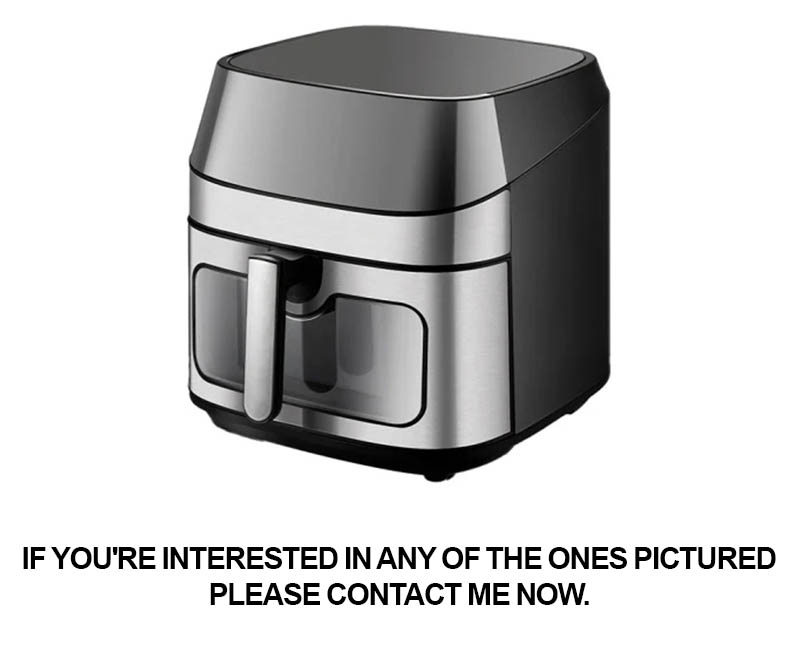
Navigating the kitchen appliance market, it’s clear that variety is the spice of life, especially when it comes to air fryers. The market has seen a surge in the demand for a wide array of air fryer models, each catering to different needs and preferences. Here’s a closer look at why a diverse product range is crucial in the FOB Ningbo air fryer supplier landscape.
Tailoring to Various Cooking StylesFrom the minimalist single-basket air fryers to multifunctional units that can roast, grill, and bake, the variety on offer reflects the diverse cooking habits of consumers. Whether someone is a fan of crispy French fries or someone looking to bake a gourmet dessert, there’s an air fryer out there that suits their culinary aspirations.
Different Capacities for Different HouseholdsThe size of an air fryer can range from compact models that are perfect for solo cooks or small families to larger capacity units that can cater to larger groups or families. This diversity ensures that there’s an air fryer for every kitchen size and usage frequency.
Smart and Eco-Friendly OptionsWith the rise of smart home technology, air fryers have evolved to include features like touchscreens, timers, and preset cooking modes. Additionally, eco-friendly models are becoming more popular, offering energy-efficient solutions that reduce the carbon footprint without compromising on performance.
Specialized Design for Specific DietsAs health and wellness continue to be a priority, the market has responded with air fryers designed for specific diets. This includes models that are suitable for low-carb, gluten-free, and paleo diets, often featuring non-stick surfaces and materials that are free from harmful chemicals.
Integrated AccessoriesSome air fryer models come with a range of accessories, such as additional baskets, lids, and even recipe books. This adds value to the product and allows consumers to expand their cooking possibilities without having to invest in separate appliances.
Customization and Brand IdentityAir fryer suppliers in FOB Ningbo offer a range of brands, each with its own unique style and features. From sleek and modern designs to classic and rustic looks, customers can choose an air fryer that not only performs well but also complements their kitchen decor and personal style.
Innovations in Cooking TechnologyThe product range also includes innovative cooking technologies, such as variable temperature control and advanced heating elements that ensure even cooking and a perfect texture. These features make air fryers not just a healthy alternative to deep-frying, but also a versatile cooking tool.
Value for MoneyWith such a diverse range of air fryers available, there’s something for every budget. From budget-friendly options that offer essential functionality to premium models with all the bells and whistles, customers can find an air fryer that fits their price point without sacrificing quality.
Sustainability and RecyclabilityAs the world becomes more environmentally conscious, air fryer suppliers are also focusing on sustainability. Many of the new models are made with recyclable materials, and some brands are even committed to reducing plastic use and promoting recycling programs.
Cultural and Regional PreferencesThe product range reflects the global nature of the market, with air fryers designed to cater to specific cultural and regional preferences. This includes models that can handle a wider temperature range or have features that are popular in certain parts of the world.
In summary, the diverse product range in the air fryer market, particularly among FOB Ningbo suppliers, is a testament to the industry’s responsiveness to consumer needs. It allows for a wide selection that can meet the demands of various households, diets, and cooking preferences, making air fryers a must-have kitchen appliance for many.
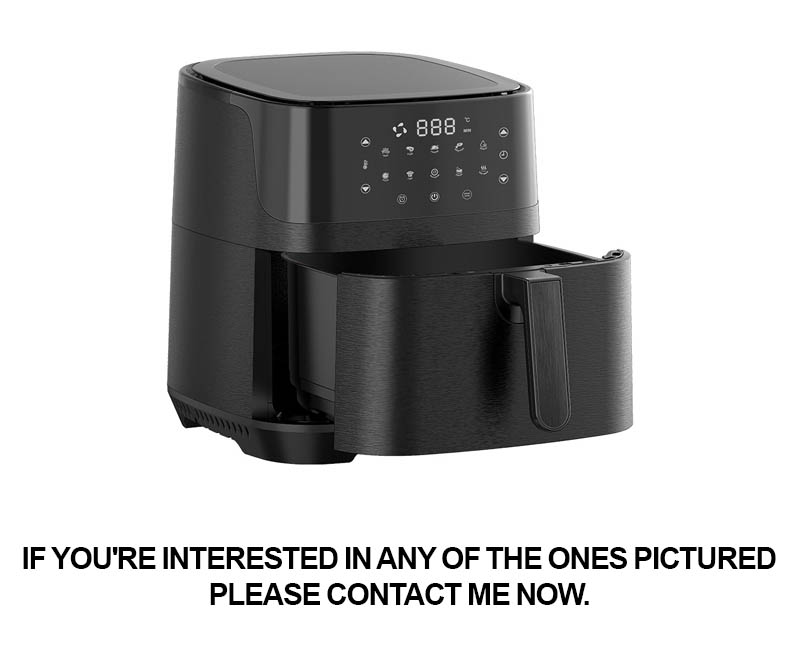
In recent years, there has been a significant shift in the culinary landscape, with a growing emphasis on healthier cooking practices. This transition is not just a fleeting trend but a profound change that reflects a deeper awareness and desire for well-being. Consumers are increasingly seeking out cooking methods and ingredients that align with their health goals, leading to a variety of transformations in the kitchen.
One of the most noticeable changes is the rise of air frying as a preferred cooking method. Air fryers use hot air to circulate around food, creating a crispy outer layer while minimizing the amount of oil needed. This not only reduces the calorie count but also preserves the natural flavors and nutrients of the ingredients. It’s a win-win for those looking to indulge in their favorite fried foods without the guilt.
Supermarkets and specialty stores are now brimming with a variety of health-conscious ingredients. From low-sodium soy sauce to gluten-free flour, the options are endless. These changes are a direct response to consumer demand for more nutritious and sustainable food choices. The market has seen an influx of organic produce, whole grains, and plant-based alternatives, all designed to cater to those seeking a healthier lifestyle.
The culinary world has also witnessed a surge in the popularity of sous-vide cooking. This technique involves vacuum-sealing food in airtight bags and then cooking it in a water bath at a precise temperature. It ensures even cooking and retains moisture, resulting in tender and flavorful dishes. The sous-vide method is not only health-forward but also time-efficient, making it a favorite among busy professionals and health enthusiasts alike.
Herbal and spice blends have also seen a resurgence, as they offer a flavorful alternative to salt and fat. These blends often include a mix of antioxidants and anti-inflammatory properties, making them not just a tasty addition to dishes but also a healthful one. Chefs and home cooks are experimenting with a variety of herbs and spices to create unique flavor profiles that are both satisfying and beneficial.
Another key aspect of the shift towards healthier cooking is the focus on local and seasonal ingredients. By using produce that is in season, not only does one support local farmers and reduce carbon footprints, but the food also tends to be more nutritious due to its freshness. Seasonal ingredients often have higher levels of vitamins and minerals, which are essential for maintaining good health.
Moreover, there’s a growing trend towards plant-based diets, which has spurred the development of a wide array of meatless alternatives. These substitutes are not only environmentally friendly but also offer health benefits such as lower saturated fat and cholesterol levels. The variety of meatless options has expanded significantly, with products that mimic the taste and texture of meat, fish, and dairy, making it easier for those transitioning to a plant-based lifestyle.
Restaurants and cafes are also jumping on the bandwagon, offering a plethora of healthy eating options. From vegan burgers to grain bowls, these establishments are catering to customers who are looking for nutritious meals that are as delicious as they are good for you. The emphasis on health in the food industry is not just a marketing ploy but a genuine effort to provide consumers with options that align with their health objectives.
Cookbooks and cooking shows have also evolved to reflect this shift. Chefs and food influencers are now more likely to share recipes that are not only easy to prepare but also packed with health benefits. The focus is on simplicity and authenticity, showcasing how even the most mundane ingredients can be transformed into something extraordinary.
The shift towards healthier cooking is a multifaceted change that touches every aspect of the food industry. From the ingredients we choose to the methods we use to prepare our meals, it’s clear that the health of both individuals and the planet is at the forefront of our culinary consciousness. This movement is not just a trend; it’s a sustainable shift that promises to shape the future of food.
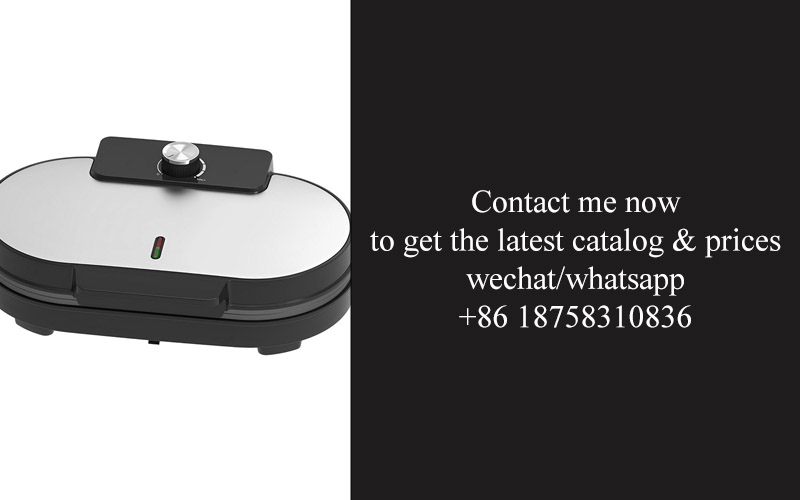
In the modern kitchen, the rise of smart features and eco-friendly designs in appliances is not just a trend; it’s a reflection of our growing consciousness towards sustainability and convenience. Here’s a closer look at how these aspects are reshaping the air fryer market:
The integration of smart technology into kitchen appliances, such as air fryers, has revolutionized the way we cook. These features include touch screens, pre-set cooking programs, and remote control capabilities, allowing users to manage their appliances from a distance. This not only adds a layer of convenience but also ensures that the cooking process is as straightforward as possible.
With the ability to program different cooking times and temperatures, smart air fryers have become a favorite among busy professionals and health-conscious consumers. The touch screen interface makes it easy to navigate through various settings, from crispy French fries to healthy roasted vegetables, all with minimal effort.
Eco-friendly designs are also gaining traction, as manufacturers strive to reduce their environmental footprint. Air fryers, traditionally known for their energy efficiency, are now being produced with sustainable materials and more energy-saving technologies. For instance, some models come with a ceramic-coated basket that not only improves the cooking quality but also reduces the need for excessive oil, thus lowering the carbon footprint.
The use of eco-friendly materials extends beyond the construction of the appliance. Companies are now opting for recyclable packaging and biodegradable components, ensuring that the product lifecycle is as green as possible. This shift is not just about marketing; it’s a genuine commitment to the environment.
Another notable aspect of eco-friendly air fryers is their ability to minimize waste. By providing precise cooking times and temperatures, these appliances reduce the likelihood of overcooking or burning food, which often leads to waste. Moreover, the compact nature of air fryers means that they consume less space in the kitchen, which is a bonus for those who are conscious about their footprint.
In terms of smart features, one of the most exciting developments is the incorporation of connectivity options. Many modern air fryers can be paired with smartphones via Wi-Fi or Bluetooth, allowing users to monitor and control their cooking through dedicated apps. This connectivity means that whether you’re at home or on the go, you can keep an eye on your food and adjust the settings as needed.
The rise of smart air fryers has also spurred the creation of new recipes and cooking techniques. Chefs and food enthusiasts are experimenting with different ingredients and cooking methods, leading to a surge in unique and health-conscious recipes. These advancements in technology have democratized cooking, making it possible for anyone to create restaurant-quality dishes at home.
Additionally, smart air fryers often come with features that enhance the cooking experience. For example, some models have timers that automatically shut off the appliance once the cooking is complete, preventing any potential overcooking. Others offer programmable delay start functions, allowing users to prepare ingredients in advance and have their food ready at a specific time.
From an environmental standpoint, these smart features contribute to energy savings. By optimizing the cooking process, air fryers with smart features consume less energy than traditional cooking methods. This is particularly beneficial in households where energy consumption is a significant concern.
As the market continues to evolve, we can expect to see even more innovative smart features being added to air fryers. Features such as voice control, AI-driven recipe recommendations, and energy-saving modes are on the horizon. These advancements will not only make cooking more efficient but also more enjoyable and accessible to a wider audience.
In conclusion, the integration of smart features and eco-friendly designs in air fryers has transformed the appliance from a simple kitchen gadget to a versatile tool that promotes healthier living and sustainability. As technology continues to advance, we can look forward to even more innovative solutions that will further enhance our cooking experiences.
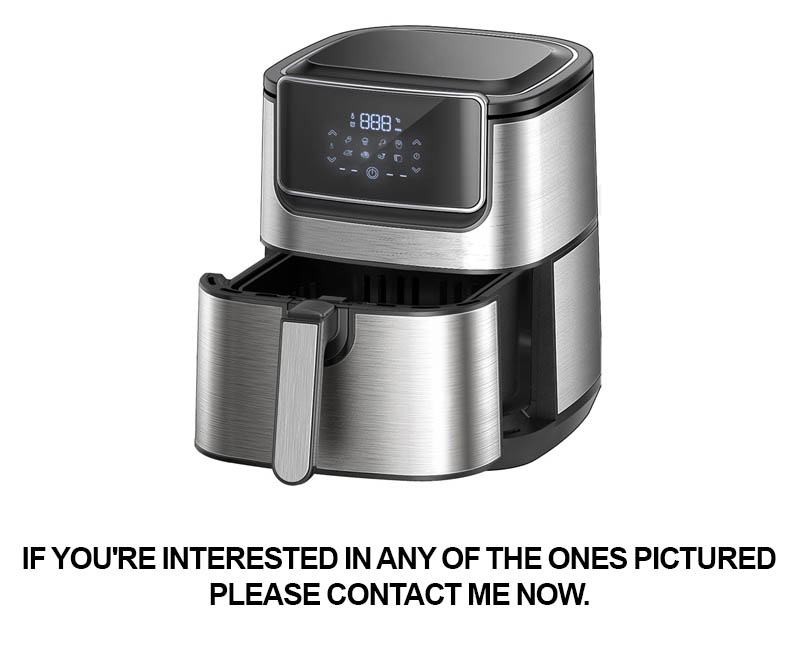
In the ever-evolving landscape of the kitchen appliance industry, staying abreast of the latest trends is crucial. One significant trend that has been gaining traction is the integration of smart features and eco-friendly designs into kitchen gadgets, particularly air fryers. This analysis delves into the nuances of these trends, highlighting their impact on consumer preferences and market dynamics.
The surge in technology has led to the development of air fryers that now boast a range of smart features. From digital displays to automatic programs, these advancements make cooking more intuitive and efficient. Users can now set their desired cooking times and temperatures with precision, thanks to these user-friendly interfaces.
Moreover, the inclusion of Wi-Fi connectivity has allowed for remote control via smartphones, making it possible to monitor and adjust cooking settings from anywhere. This level of convenience has not only simplified the cooking process but has also opened up new possibilities for health-conscious consumers who want to maintain a balanced diet without compromising on taste.
Eco-friendliness is another critical aspect of the latest industry trends. As environmental concerns grow, manufacturers are increasingly focusing on sustainability. This shift is evident in the use of energy-efficient components and materials that reduce the carbon footprint of air fryers.
One notable example is the adoption of ceramic coatings instead of traditional non-stick surfaces. Ceramic coatings are free from harmful chemicals like PFOA and PTFE, which are commonly found in Teflon coatings. This not only makes the air fryers safer for health but also contributes to a cleaner environment.
The design of these eco-friendly air fryers is also a testament to the industry’s commitment to sustainability. Many models are now made with recycled materials, reducing waste and promoting a circular economy. The sleek, modern designs not only appeal to aesthetically conscious consumers but also align with the global trend of reducing plastic usage.
In terms of performance, the latest air fryers are engineered to be more energy-efficient. They use less oil than traditional deep-frying methods, which not only results in healthier meals but also conserves energy. This efficiency is a crucial factor for consumers who are conscious of both their health and their utility bills.
The market for smart air fryers with eco-friendly designs is also witnessing a surge in demand. Consumers are increasingly looking for appliances that not only perform well but also reflect their values. This trend is being driven by a younger demographic that is more likely to prioritize sustainability and technological innovation.
The rise of social media and influencer marketing has also played a significant role in shaping these trends. As more people share their experiences with smart kitchen appliances, the word spreads quickly. Positive reviews and demonstrations of the benefits of these air fryers have contributed to their popularity.
From a business perspective, manufacturers are investing heavily in research and development to keep up with these trends. They are exploring new materials, technologies, and manufacturing processes to create air fryers that are both smart and eco-friendly.
In conclusion, the latest industry trends in air fryers are characterized by the seamless integration of smart features and eco-friendly designs. These advancements not only enhance the user experience but also address broader societal concerns. As the market continues to evolve, it’s clear that consumers are gravitating towards appliances that offer a balance of convenience, health, and sustainability.
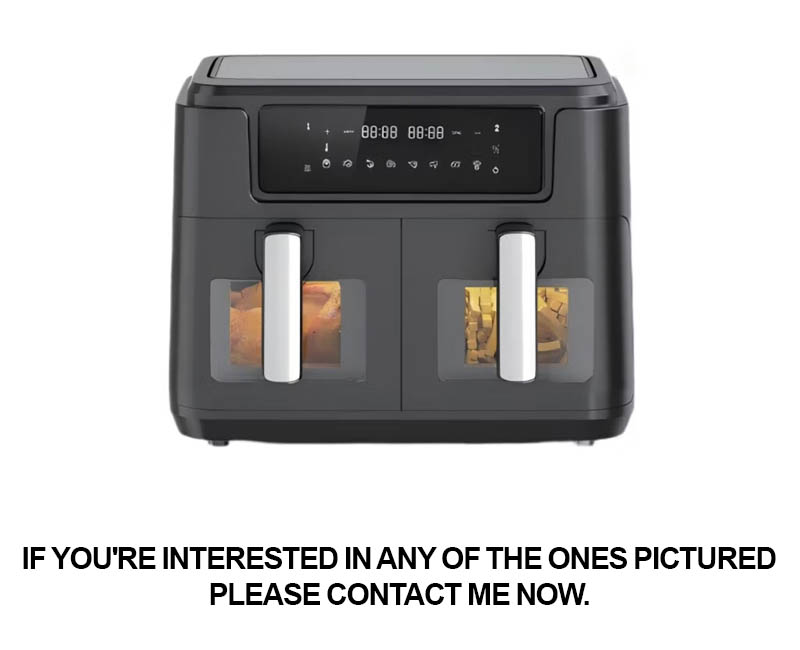
In recent years, understanding consumer behavior and analyzing market data have become crucial for the success of any industry, including the kitchen appliances sector. Here’s a delve into the nuances of these aspects within the context of the air fryer market:
The consumer’s quest for healthier lifestyles has been a driving force behind the air fryer’s popularity. With the rise of awareness about the negative health impacts of deep-frying, consumers are seeking alternatives that allow them to enjoy their favorite fried foods with fewer calories and less oil. Market data reflects a significant increase in air fryer sales, especially among health-conscious consumers who are willing to invest in gadgets that promise a healthier cooking experience.
Digital analytics have uncovered a trend where consumers are not just looking for a healthier option but also for appliances that offer convenience and efficiency. The data shows that a significant portion of the market is made up of young professionals and families who value time-saving features like pre-set cooking modes and automatic shut-off functions. This demand has led to a surge in smart features being integrated into air fryers.
Social media platforms and online reviews have become powerful tools for consumer behavior analysis. They reveal that consumers are not just interested in the product’s technical specifications but also in its ease of use and the variety of foods it can prepare. For instance, the ability to air fry a range of dishes from vegetables to meat, fish, and desserts has become a key selling point. Market data indicates a strong correlation between positive reviews and increased sales, highlighting the influence of word-of-mouth and online communities.
Another interesting finding from market data is the growing preference for air fryers that are not only functional but also stylish. Consumers are looking for appliances that can complement their kitchen decor and add a touch of modernity. This shift has spurred a demand for air fryers with sleek designs, LED displays, and even Bluetooth connectivity for remote monitoring and control.
Demographic analysis has also played a role in shaping the market data. For instance, while the health trend drives sales among younger consumers, there’s a noticeable interest among older demographics as well. Market data suggests that air fryers are becoming a staple in retirement communities, where health concerns are prevalent, and ease of use is a priority.
The data also reveals regional preferences and how they affect market trends. For example, regions with a higher incidence of heart disease or obesity have seen a more significant increase in air fryer sales. Additionally, regions where traditional cooking methods are less common, such as in urban areas, tend to have a higher adoption rate for air fryers.
In terms of brand loyalty, market data indicates that consumers are more likely to stick with brands that offer a range of products that cater to different needs. This includes not just air fryers but also other kitchen appliances that can be used in conjunction with air fryers, such as multi-cookers and ovens. The integration of these appliances into a brand’s product line seems to enhance consumer trust and loyalty.
Lastly, the data suggests that there’s a growing trend towards sustainability, with eco-friendly designs becoming more appealing to consumers. This includes not just the materials used in the manufacturing process but also the energy efficiency of the appliances themselves. Consumers are increasingly looking for appliances that are not only good for their health but also for the environment.
Understanding these consumer behavior patterns and market data trends is essential for suppliers and manufacturers in the air fryer industry. By aligning their product development with these insights, they can create more appealing and successful products that resonate with the ever-evolving demands of the consumer market.
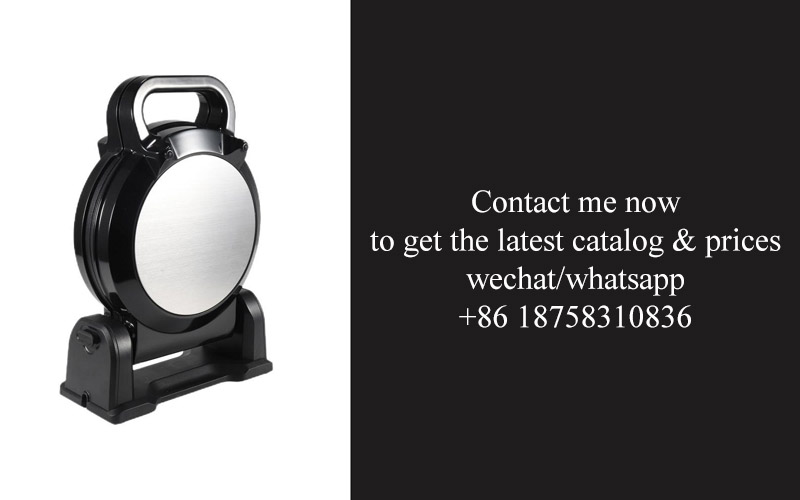
In today’s fast-paced and health-conscious world, the quality of kitchen appliances has become a paramount concern for consumers. When it comes to evaluating product quality, especially for air fryers, there are several key aspects to consider that can make a significant difference in the end-user experience.
Material DurabilityThe materials used in the construction of an air fryer are fundamental to its longevity and performance. High-quality air fryers are often made with durable stainless steel or aluminum, which not only ensures a sleek look but also withstands the test of time. These materials are resistant to rust, corrosion, and warping, making them suitable for both commercial and domestic use.
Thermal EfficiencyEfficiency is a key factor in the quality of an air fryer. A high-quality air fryer is designed to circulate hot air evenly around the food, allowing for faster cooking times and more consistent results. Look for features like adjustable temperature controls and a fan that distributes heat efficiently, ensuring that your meals are cooked to perfection without overcooking or burning.
Safety FeaturesSafety is non-negotiable in kitchen appliances. A quality air fryer will come with essential safety features such as automatic shut-off, overheat protection, and a cool-touch exterior. These features prevent accidents and ensure that your kitchen remains a safe environment for cooking and eating.
Design and Build QualityThe design of an air fryer can be an indicator of its quality. A well-thought-out design includes easy-to-use controls, a non-stick cooking basket for easy food release, and a removable lid for easy cleaning. The build quality also extends to the interior, with components that fit snugly together and are free of gaps that could harbor food particles or bacteria.
Brand ReputationThe reputation of the brand can be a strong indicator of product quality. Established brands with a history of producing reliable appliances are more likely to offer products that meet high standards. Reading reviews and checking the brand’s track record can provide insights into the quality of their air fryers.
Warranty and Customer ServiceA quality air fryer will come with a comprehensive warranty and excellent customer service. This not only protects your investment but also reflects the manufacturer’s confidence in their product. Look for brands that offer long warranties and have a reputation for promptly addressing customer concerns and issues.
Energy ConsumptionEnergy efficiency is another aspect of product quality that is often overlooked. A high-quality air fryer will consume less energy than its counterparts, leading to lower utility bills and a smaller carbon footprint. This is particularly important for eco-conscious consumers and those looking to save on energy costs.
Customization and VersatilityThe ability to customize cooking settings and use the air fryer for a variety of recipes is a sign of good quality. Look for models with adjustable temperature settings, timer functions, and the ability to cook different types of food, from crispy fries to tender meats, without compromising on quality.
User ExperienceUltimately, the user experience is a crucial part of evaluating product quality. A high-quality air fryer should be intuitive to use, with clear instructions and a user-friendly interface. The ease of cleaning, the space it occupies on the countertop, and the overall feel of the appliance all contribute to a positive user experience.
By carefully considering these aspects, consumers can make informed decisions about the quality of air fryers and ensure they invest in a product that will provide years of reliable service and enjoyable cooking experiences.
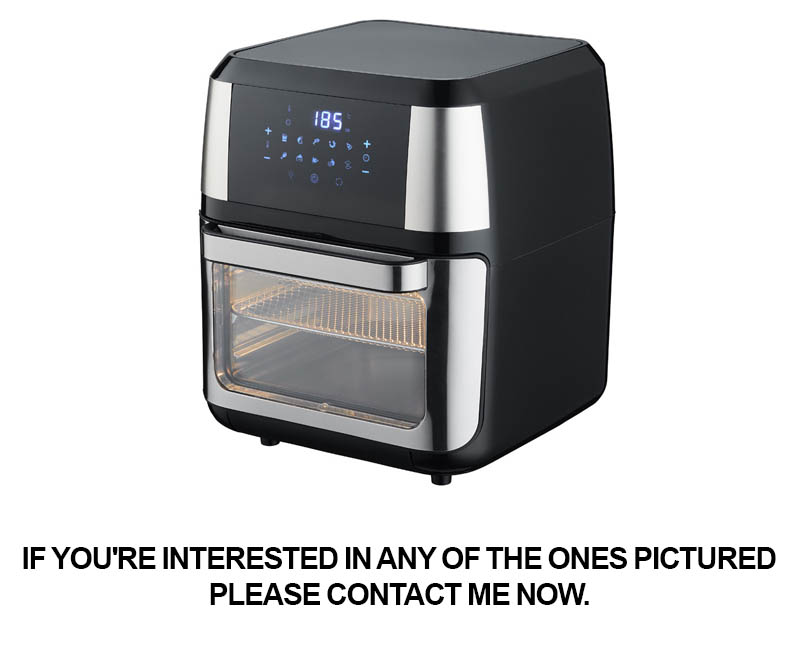
In today’s fast-paced world, the efficiency and reliability of logistics and delivery play a crucial role in the success of any business, especially in the competitive kitchen appliances market. When selecting an FOB Ningbo air fryer supplier, it’s essential to delve into the logistics and delivery aspects to ensure a seamless and satisfying experience. Here are some key factors to consider:
The Importance of Efficient LogisticsEfficient logistics is the backbone of a smooth supply chain. It involves the planning, implementation, and control of the efficient, effective flow and storage of goods, services, and related information from the point of origin to the point of consumption. For air fryer suppliers, this means managing the transportation, warehousing, and distribution of their products to ensure they reach customers in the shortest time possible without compromising on quality.
Customs Clearance and ComplianceWhen dealing with international suppliers, customs clearance becomes a pivotal aspect of logistics. Ensuring that all air fryers meet the import regulations and standards of the destination country is crucial. A reliable supplier will have a team of experts who understand the complexities of customs processes, reducing the risk of delays and potential fines due to non-compliance.
Transportation Options and CostsThe choice of transportation can significantly impact the cost and speed of delivery. Air freight may be faster but can be more expensive, while sea freight offers a more cost-effective option, albeit with longer transit times. A supplier that offers multiple transportation options allows buyers to choose based on their specific needs, whether it’s speed or budget.
Real-Time Tracking and TransparencyModern logistics solutions often include real-time tracking systems that provide customers with up-to-date information on their orders. This transparency builds trust and allows buyers to plan their inventory and sales cycles more effectively. A supplier that invests in advanced tracking technology demonstrates a commitment to customer satisfaction and operational excellence.
Last-Mile Delivery and FlexibilityThe final leg of the journey, the last-mile delivery, can be challenging due to varying local conditions. A supplier that partners with local couriers or has a strong network can navigate these challenges more effectively. Flexibility in delivery options, such as home delivery, curbside pickup, or scheduled delivery, can also enhance the customer experience.
Insurance and Risk ManagementWhen shipping goods internationally, there are inherent risks such as damage, theft, or loss. A reputable supplier will offer insurance coverage for the goods during transit, providing peace of mind to the buyer. Additionally, a robust risk management strategy can help mitigate the impact of unforeseen events that may disrupt the supply chain.
Sustainability and Eco-Friendly PracticesIn recent years, there has been a growing trend towards sustainability in logistics. Eco-friendly practices, such as using fuel-efficient vehicles, optimizing routes to reduce carbon emissions, and minimizing packaging waste, are not just good for the environment but also for the reputation of the supplier. These practices can be a deciding factor for buyers who prioritize sustainability.
Customer Service and Post-Delivery SupportThe logistics process doesn’t end with delivery. A supplier that provides excellent customer service, including post-delivery support, can resolve any issues promptly. This level of service can make a significant difference in the overall satisfaction of the buyer.
In conclusion, when evaluating an FOB Ningbo air fryer supplier, it’s vital to consider the logistics and delivery aspects carefully. Efficient logistics can mean the difference between a successful partnership and a disappointing experience. By assessing the supplier’s capabilities in customs clearance, transportation options, tracking systems, last-mile delivery, risk management, sustainability practices, and customer service, buyers can make informed decisions that align with their business goals and customer expectations.
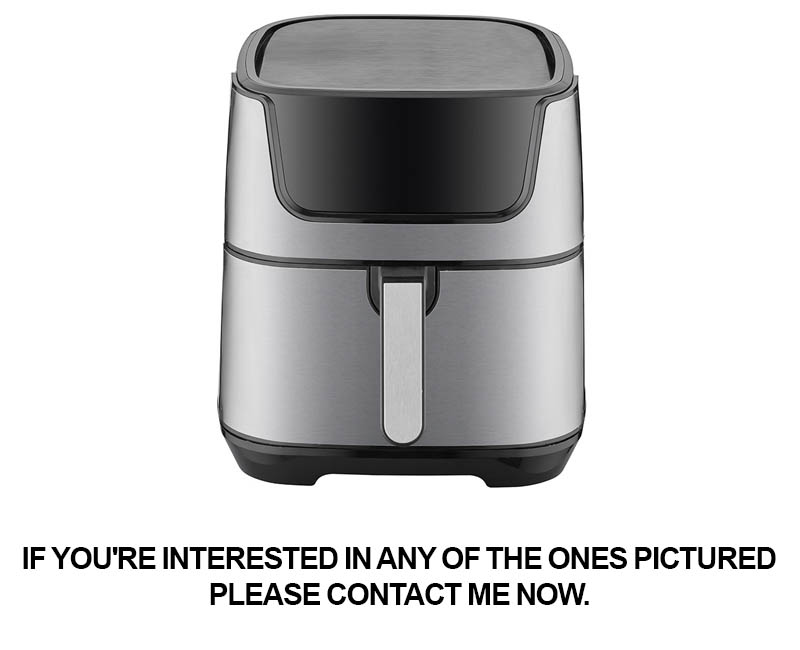
Understanding the importance of customer service and support in the kitchen appliance industry is akin to recognizing the heart of a well-functioning machine. It’s not just about the product itself; it’s about the entire experience that a brand provides to its customers. Here’s a closer look at what makes customer service and support stand out in the realm of kitchen appliances.
In the fast-paced world of technology, where new gadgets are introduced almost daily, customers seek reassurance. They want to know that if something goes awry with their kitchen appliance, they have a reliable support system in place. This means that the level of customer service and support can greatly influence customer loyalty and brand reputation.
When it comes to customer service, responsiveness is key. Customers appreciate timely assistance, whether it’s through a phone call, email, or live chat. A brand that can quickly address inquiries or resolve issues is often seen as more professional and customer-focused. This doesn’t just apply to sales, but also to after-sales service.
Support extends beyond just fixing problems. It’s about educating customers on how to use their appliances to their full potential. This could include detailed user manuals, video tutorials, or even virtual consultations with a customer service representative. By empowering customers with knowledge, brands can ensure that their products are not only purchased but also appreciated and utilized effectively.
Another critical aspect of customer service is the ease of reaching out. In today’s digital age, this means having a user-friendly website with a clear and accessible contact page. It also means offering multiple channels for communication, such as social media, email, and phone support. Customers should feel comfortable choosing the method that suits them best.
The quality of the support team is also paramount. They should be well-trained, knowledgeable, and empathetic. A customer service representative who can understand a customer’s frustration and provide a solution is invaluable. This goes beyond just technical expertise; it’s about the human touch.
In terms of support, the ability to offer spare parts or replacements is crucial. If a part of the appliance breaks down, customers should be able to get it quickly, without having to wait for a new unit. This ensures minimal disruption to their daily routines.
Brands that offer a warranty and extended service agreements demonstrate a commitment to their customers. It shows that they stand behind their products and are willing to provide ongoing support. This level of service can be a significant differentiator in a crowded market.
Moreover, customer feedback is invaluable. Brands that actively seek and listen to customer feedback are more likely to improve their products and services over time. By creating a feedback loop, companies can continuously enhance the customer experience.
In the event of a recall or a major issue with a product, how a brand handles the situation speaks volumes about its customer service ethos. A transparent and proactive approach to addressing such issues can often turn a negative situation into a positive one, reinforcing customer trust.
Lastly, the integration of customer service and support into the broader marketing strategy is essential. It’s not just about solving problems but also about creating a positive brand image. Social media, for instance, can be a powerful tool for showcasing excellent customer service in real-time.
In conclusion, customer service and support in the kitchen appliance industry are about creating a seamless experience for the customer. It’s about being there when they need help, providing them with the knowledge to use their products effectively, and ensuring that they feel valued as a customer. A brand that excels in these areas is not just selling a product; it’s building a relationship with its customers.
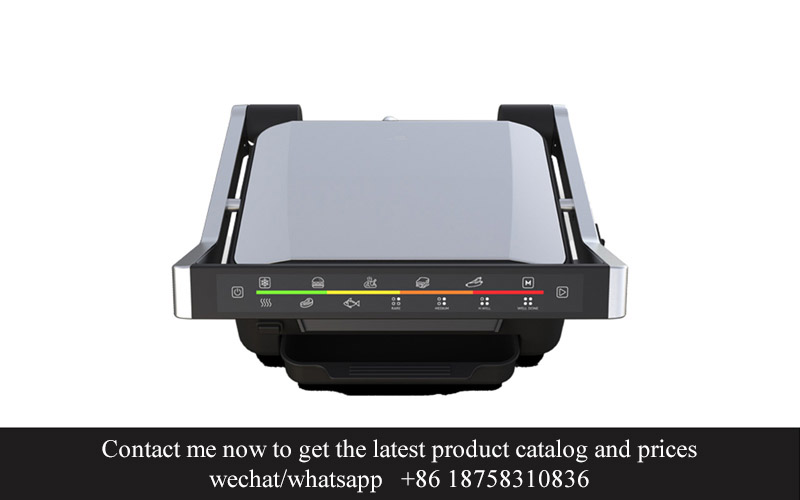
In the ever-evolving landscape of kitchen appliances, the integration of new technologies has become a cornerstone of innovation. From AI-driven cooking assistance to energy-efficient designs, the air fryer market is no exception. Here’s a glimpse into the cutting-edge technologies shaping the future of air fryers.
The rise of smart appliances has been a game-changer, and air fryers are no longer just about frying with less oil. New models are equipped with smart features that allow for precise temperature control, automated cooking programs, and even the ability to connect with your smartphone. Imagine setting your air fryer to cook while you’re at work, and it sends you a notification when your meal is ready—technology that’s not just convenient but also adds an element of personalization to the cooking experience.
Energy efficiency is another area where emerging technologies are making a significant impact. Modern air fryers are designed to consume less electricity while maintaining the same cooking performance. This shift towards energy-saving technology is not only beneficial for the environment but also for consumers looking to reduce their utility bills.
Advanced materials are also playing a pivotal role. The use of non-stick coatings that are free from harmful chemicals is becoming more prevalent, ensuring that air fryers are safe for health-conscious consumers. Additionally, the development of durable and heat-resistant materials is making these appliances more resilient and longer-lasting.
In terms of cooking capabilities, air fryers are expanding their range with features like multi-functional cooking modes. These include options for roasting, grilling, and even baking, all within the confines of an air fryer. This versatility is attracting a broader audience who are interested in a single appliance that can handle multiple cooking tasks.
One of the most exciting developments is the incorporation of IoT (Internet of Things) technology. Air fryers that can be controlled remotely through a smartphone app are not just a convenience but also a testament to the interconnected world we live in. Users can monitor cooking progress, adjust settings, and even troubleshoot issues from anywhere, which is particularly useful for those who are tech-savvy or have busy lifestyles.
Another significant trend is the integration of health and wellness tracking. Some air fryers now come with features that not only monitor cooking times and temperatures but also provide nutritional information. This can be especially helpful for those following specific diets or looking to track their calorie intake.
The use of AI to optimize cooking processes is also on the rise. AI algorithms can learn from user preferences and cooking habits, suggesting adjustments to recipes and cooking times for the best results. This level of personalization is a step towards making cooking more intuitive and enjoyable for everyone.
In the realm of sustainability, air fryers are being designed with the environment in mind. This includes the use of recycled materials for the appliances themselves, as well as packaging that is eco-friendly. Companies are also focusing on reducing the carbon footprint associated with manufacturing and distribution.
Lastly, there’s a growing trend towards modular designs, where air fryers can be paired with other kitchen appliances to create a comprehensive cooking system. This modular approach allows consumers to customize their kitchen setups according to their needs and preferences.
As these technologies continue to evolve, the air fryer market is poised to become even more diverse and innovative. The future of air fryers is not just about healthier cooking options; it’s about embracing the possibilities that technology brings to the kitchen.

In the ever-evolving landscape of the kitchen appliance industry, identifying new market expansion opportunities is crucial for manufacturers and suppliers. These chances can be found in diverse regions, emerging trends, and evolving consumer needs. Here’s a closer look at some key areas where the market for kitchen appliances, particularly air fryers, is set to expand:
Diverse Consumer Markets
The global demand for air fryers is on the rise, but there are still untapped markets around the world. Exploring countries with growing middle classes and a shift towards healthier lifestyles can be a strategic move. For instance, in countries like India, the increasing awareness of health and wellness has led to a surge in interest in kitchen appliances that offer healthier cooking options. Similarly, in Latin America, where traditional cooking methods often involve high levels of oil, the appeal of air fryers as a healthier alternative is gaining traction.
Urbanization and Changing Lifestyles
As urbanization continues to reshape the global landscape, so does the way people live and cook. Urban dwellers often have smaller living spaces and less time to dedicate to cooking. This creates a perfect opportunity for compact, efficient, and easy-to-use kitchen appliances like air fryers. The convenience of these devices makes them a practical choice for busy professionals and families, driving demand in cities across the globe.
Health and Wellness Trends
The health and wellness movement has become a significant force in consumer behavior, influencing the types of products people seek. Air fryers have been embraced by this trend due to their ability to cook food with minimal oil, reducing the calorie content and potential health risks associated with fried foods. As consumers become more health-conscious, the market for air fryers is expected to grow, especially in regions where there is a strong emphasis on dietary health.
Technological Integration
The integration of technology into kitchen appliances is another area ripe for expansion. Smart appliances that can be controlled remotely, offer recipe suggestions, or even connect to fitness apps to track nutritional intake are becoming increasingly popular. As technology advances, the market for air fryers with smart features is likely to expand, appealing to tech-savvy consumers who value convenience and innovation.
Sustainability and Eco-Friendly Designs
With environmental concerns on the rise, there is a growing demand for eco-friendly products. Air fryers, which consume less energy than traditional deep fryers and can be used to prepare a variety of dishes, are a sustainable choice. Companies that focus on eco-friendly designs and sustainable practices are likely to find a receptive market, especially in countries where sustainability is a key purchasing criterion.
Cross-Border E-Commerce
The rise of e-commerce has opened up new avenues for market expansion. Online platforms allow manufacturers and suppliers to reach customers in remote areas and countries that were previously inaccessible. By leveraging e-commerce, air fryer suppliers can tap into niche markets and offer their products to a broader audience, including those who prefer shopping online for convenience or variety.
Partnerships with Local Retailers and Distributors
To successfully expand into new markets, it’s important to establish strong partnerships with local retailers and distributors. These partnerships can help navigate cultural nuances, understand local regulations, and ensure that the product is positioned correctly within the market. By working with local entities, suppliers can also gain valuable insights into consumer preferences and tailor their offerings accordingly.
Targeted Marketing and Branding
Effective marketing and branding strategies are essential for market expansion. Understanding the target audience’s values and needs is key to crafting messages that resonate. For example, focusing on the health benefits of air fryers in markets where health consciousness is high can be a powerful marketing tool. Similarly, highlighting the convenience and efficiency of air fryers in urban areas can attract consumers who are looking for time-saving solutions.
In conclusion, the market for air fryers and other kitchen appliances is expanding in numerous ways. By targeting diverse consumer markets, adapting to changing lifestyles, embracing health and wellness trends, integrating technology, focusing on sustainability, leveraging e-commerce, forming local partnerships, and implementing targeted marketing strategies, suppliers can capitalize on these opportunities and grow their market presence.